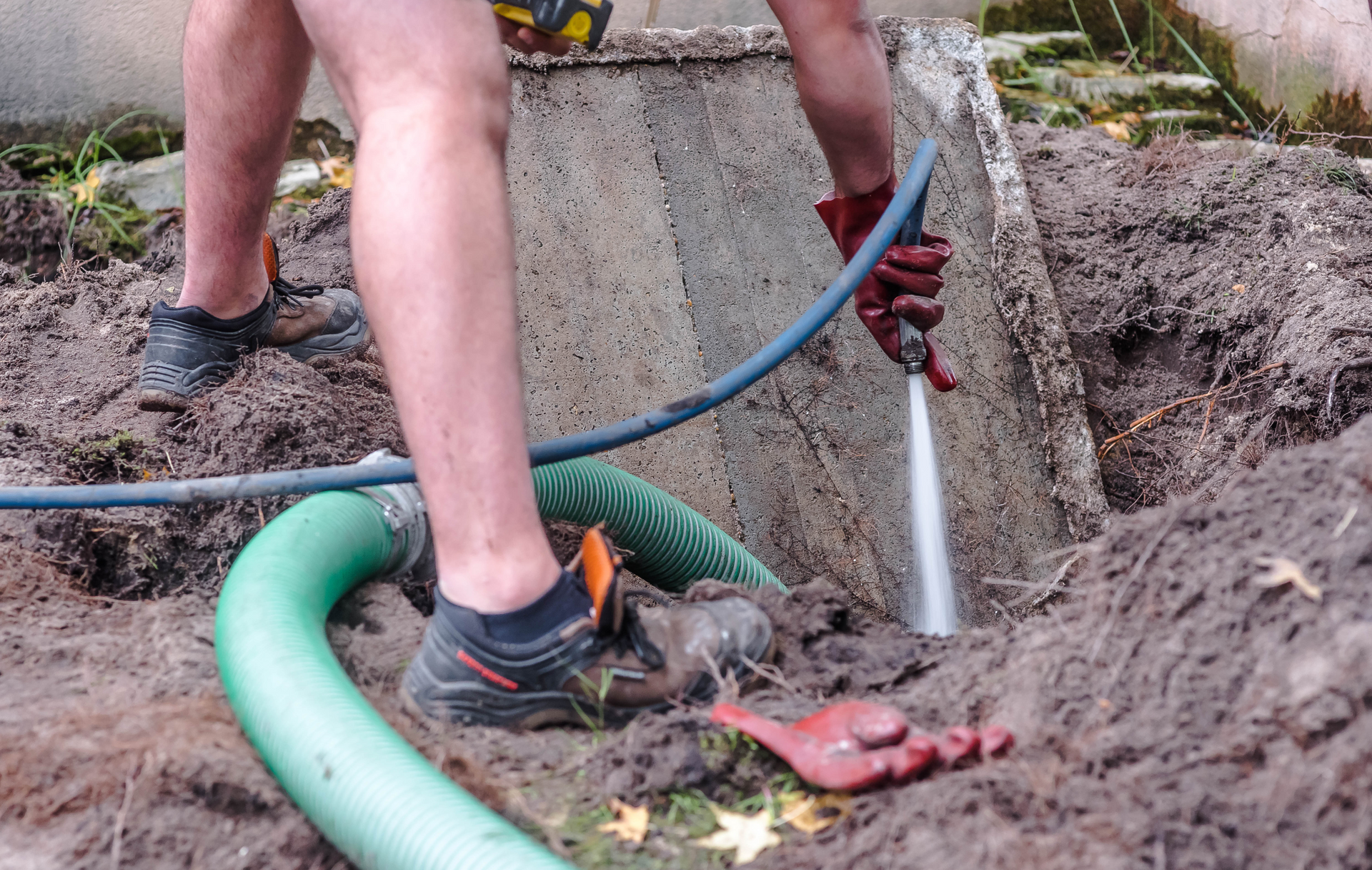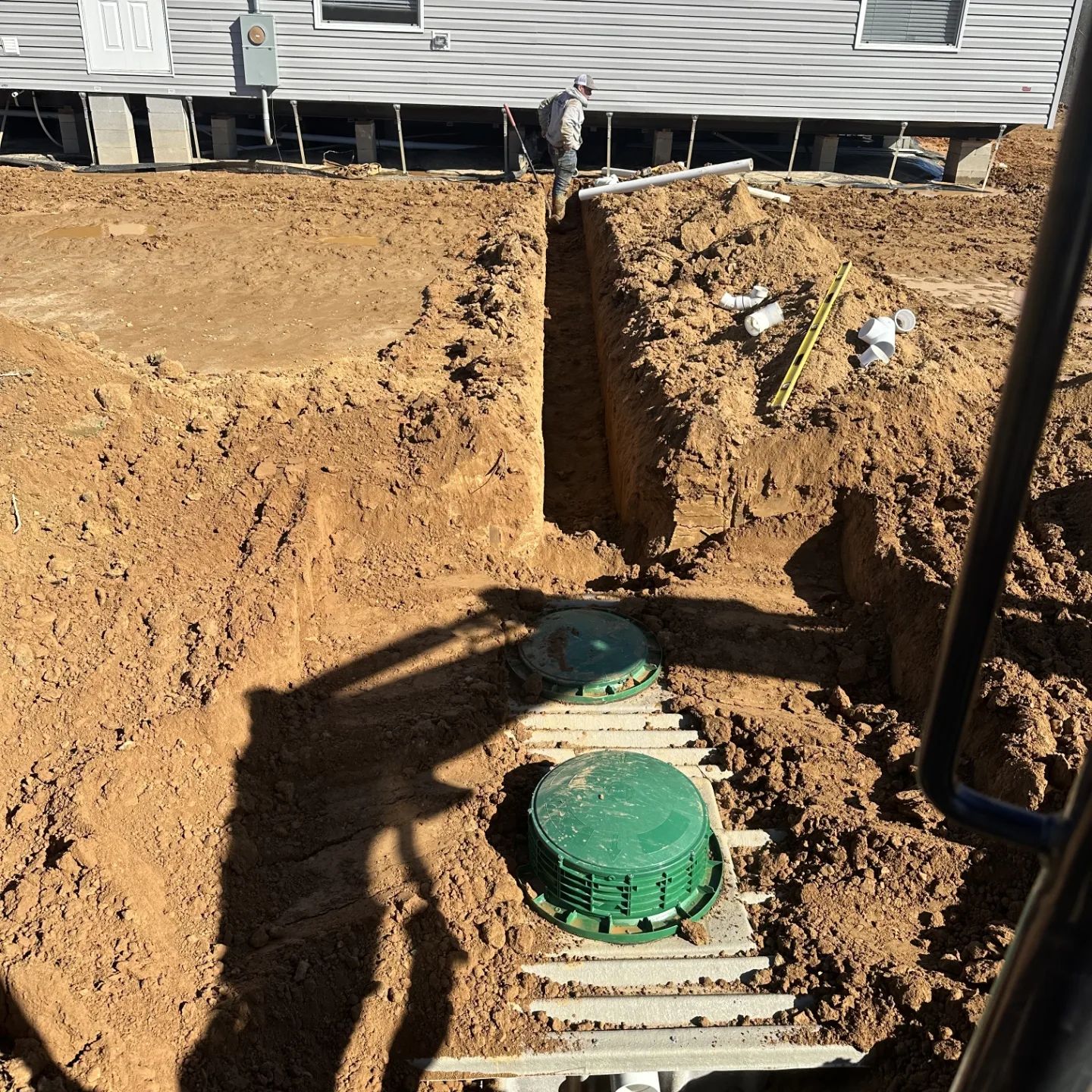Troubleshoot Slow Draining Sink: Septic Issues in Oxford, MS
February 26, 2024
Troubleshooting a Slow-Draining Sink: Is It a Septic Issue in Oxford, MS?
Few household issues are more frustrating than a slow-draining sink. You turn on the tap, and instead of a swift flow of water, you're met with a sluggish, hesitant drain. While this problem is often associated with plumbing issues, it's essential to consider the possibility that it could be related to your septic system, especially if you reside in Oxford, MS. In this comprehensive guide, Oxford Septic Service will explore the potential reasons behind a slow-draining sink, how to troubleshoot the issue, and when it might indeed be a septic problem.
Common Causes of Slow-Draining Sinks
Before jumping to conclusions about your septic system, let's explore the typical culprits behind slow-draining sinks:
Clogs: Accumulated debris, soap scum, or hair can obstruct the sink's drainpipes, causing slow drainage. This issue is usually localized to the affected sink.
Venting Problems: If your plumbing vent system is blocked or damaged, it can disrupt the flow of water and air in your pipes, leading to slow drainage throughout your home.
Pipe Build-Up: Over time, minerals and sediment can accumulate inside your plumbing pipes, narrowing the passageway for water to flow freely.
Faulty Plumbing: Old or poorly installed plumbing can contribute to slow drains. Pipes that are not sloped correctly or have damaged joints can impede water flow.
Troubleshooting Steps for Slow-Draining Sinks
When you encounter a slow-draining sink, follow these troubleshooting steps to identify the root cause:
1. Check Other Drains: Test whether the issue is isolated to one sink or affects multiple drains in your home. If it's only one sink, the problem is likely localized.
2. Use a Plunger: Plunging the slow-draining sink can often dislodge minor clogs. Make sure to use a sink plunger specifically designed for this purpose.
3. Remove the Trap: If plunging doesn't work, you can try removing and cleaning the P-trap under the sink. Be prepared for some water spillage when you do this.
4. Boiling Water and Baking Soda: Pouring boiling water mixed with baking soda down the drain can help break down minor clogs caused by grease and soap scum.
5. Observe Ventilation: Ensure that your plumbing vent stack is clear of debris or obstructions. Ventilation problems can lead to slow drainage in multiple sinks.
6. Check for Local Clogs: Investigate whether there are visible clogs in the drain itself. Sometimes, foreign objects or hair can be easily removed.
When Is It a Septic Issue?
If you've exhausted these troubleshooting steps and the problem persists or affects multiple drains in your home, it might be time to consider whether your septic system is involved. Here are signs that the issue could be septic-related:
Foul Odors: If you notice foul smells coming from your sinks or drains, it could indicate a septic problem.
Gurgling Toilets: Gurgling sounds in your toilet when you run water in the sink can suggest septic system issues.
Slow Drains Throughout: When all your sinks and drains are draining slowly, it's a potential indicator that your septic tank is full or experiencing problems.
Sewage Backups: In severe cases, slow drainage can escalate to sewage backups in your sinks, tubs, or toilets.
What to Do When It's a Septic Issue
If you suspect your slow-draining sinks are related to your septic system, it's essential to act promptly:
Schedule a Septic Inspection: Contact a professional septic service like Oxford Septic Service to perform a thorough inspection of your septic system.
Avoid Harsh Chemicals: Refrain from using chemical drain cleaners, as these can harm your septic system.
Reduce Water Usage: Until the issue is resolved, try to minimize water usage in your home to prevent further stress on your septic system.
Follow Professional Advice: Listen to the recommendations of your septic service provider. They may recommend septic tank pumping or repairs based on their findings.
In conclusion, while a slow-draining sink is often a minor plumbing issue, it's essential to consider the possibility of a septic system problem, especially if you notice additional signs like foul odors or gurgling toilets. Regular septic system maintenance and prompt professional intervention can help resolve the issue and prevent more significant problems in the future. For expert septic services in Oxford, MS, don't hesitate to contact Oxford Septic Service.

Septic tank pumping is a crucial aspect of septic system maintenance that often goes overlooked by property owners. Regular pumping helps prevent costly repairs, prolongs the lifespan of the septic system, and protects the environment from contamination. In this guide, Oxford Septic Services shares valuable insights into the importance of routine septic tank pumping and its many benefits. Chapter 1: Understanding the Role of Septic Tank Pumping Overview of the septic tank pumping process and its significance in maintaining a healthy septic system Explanation of how septic tank pumping removes accumulated solids and sludge from the tank, preventing clogs and backups Chapter 2: Preventing Costly Repairs and System Failures Discussion of the potential consequences of neglecting septic tank pumping, including system backups, drain field damage, and groundwater contamination Exploration of the financial implications of septic system repairs and replacements compared to the relatively low cost of routine pumping Chapter 3: Extending the Lifespan of Your Septic System Explanation of how regular septic tank pumping helps prolong the lifespan of the septic system by reducing stress on system components and preventing premature failure Discussion of the correlation between routine pumping and the overall health and longevity of the septic system Chapter 4: Protecting the Environment and Public Health Examination of the environmental and public health risks associated with untreated wastewater discharge from poorly maintained septic systems Explanation of how routine septic tank pumping helps mitigate these risks by preventing groundwater contamination and protecting local water sources Chapter 5: Maintaining Property Value and Resale Potential Exploration of the impact of a well-maintained septic system on property value and resale potential Discussion of how routine septic tank pumping demonstrates responsible property ownership and can increase buyer confidence during real estate transactions Chapter 6: Ensuring Regulatory Compliance Overview of local regulations and requirements regarding septic system maintenance and pumping frequency Explanation of how routine septic tank pumping helps property owners remain in compliance with regulatory standards and avoid potential fines or penalties Chapter 7: Best Practices for Scheduling Septic Tank Pumping Recommendations for establishing a regular pumping schedule based on factors such as household size, water usage, and septic system capacity Tips for working with professional septic service providers like Oxford Septic Services to schedule timely and efficient pumping services Conclusion: Routine septic tank pumping is an essential aspect of responsible septic system ownership, offering numerous benefits for property owners, the environment, and public health. By understanding the importance of routine pumping and working with trusted professionals like Oxford Septic Services, property owners can ensure the long-term performance and reliability of their septic systems.

Installing a septic system is a critical step in ensuring proper wastewater management for residential and commercial properties. However, the installation process can be complex and requires careful planning and execution. In this comprehensive guide, Oxford Septic Services provides essential information and expert tips for homeowners and property owners considering septic system installation. Chapter 1: Understanding the Basics of Septic Systems Overview of septic systems and their components, including the septic tank, drain field, and distribution box Explanation of how septic systems function to treat and dispose of wastewater on-site, without access to a municipal sewer system Chapter 2: Assessing Site Conditions and Permitting Requirements Guidance on assessing soil conditions, topography, and site suitability for septic system installation Explanation of the permitting process and regulatory requirements for septic system installation, including obtaining necessary permits and approvals from local authorities Chapter 3: Designing the Septic System Overview of the steps involved in designing a septic system, including determining system size, layout, and location Discussion of factors to consider when designing a septic system, such as property size, soil type, and groundwater levels Chapter 4: Selecting and Installing Septic System Components Explanation of the different types of septic tanks, drain fields, distribution boxes, and other system components available for installation Step-by-step instructions for properly installing septic system components, including excavation, tank placement, piping installation, and backfilling Chapter 5: Ensuring Proper System Ventilation and Plumbing Connections Importance of providing adequate ventilation for the septic system to prevent the buildup of harmful gases, such as methane and hydrogen sulfide Guidelines for properly connecting plumbing fixtures, such as toilets, sinks, and showers, to the septic system to ensure efficient wastewater flow Chapter 6: Conducting Final Inspections and Testing Overview of the final inspection and testing process to ensure that the septic system meets all regulatory requirements and functions properly Explanation of common tests conducted during the final inspection, such as hydraulic load testing, dye testing, and soil percolation testing Chapter 7: Maintaining and Caring for Your New Septic System Recommendations for ongoing maintenance and care of the newly installed septic system, including routine pumping, inspection, and monitoring Tips for avoiding common pitfalls and ensuring the long-term reliability and performance of the septic system Conclusion: By following the guidelines and expert tips provided in this guide, property owners can navigate the septic system installation process with confidence. With careful planning, proper design, and professional installation by Oxford Septic Services, property owners can ensure the reliable operation and longevity of their septic systems for years to come.
